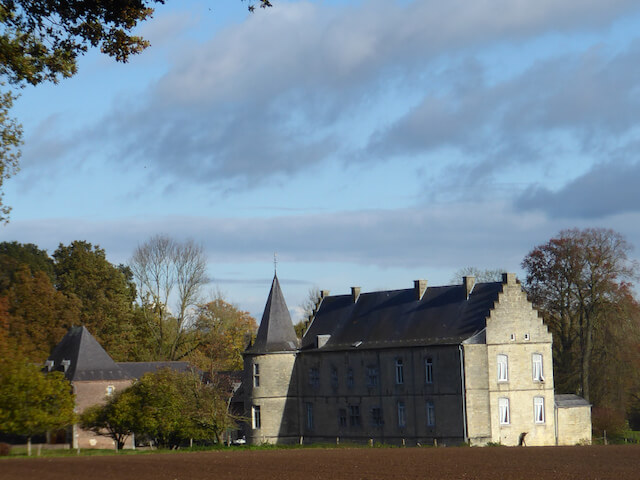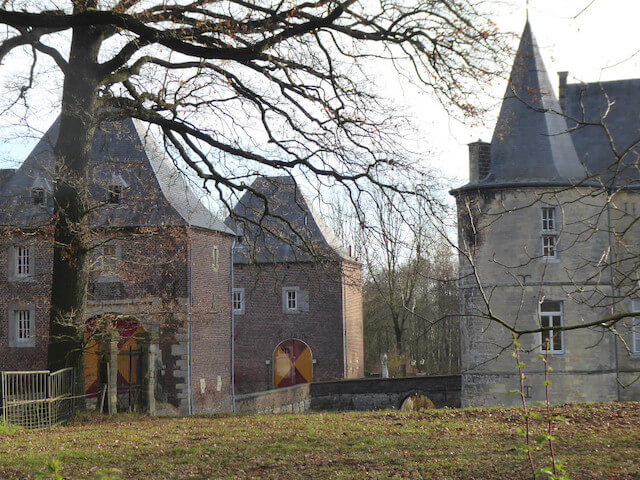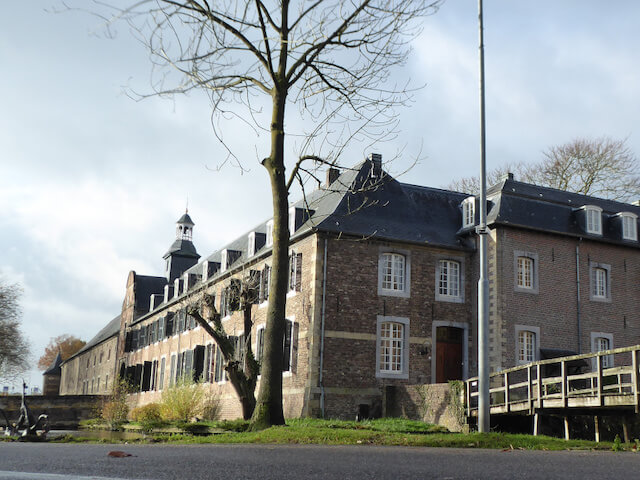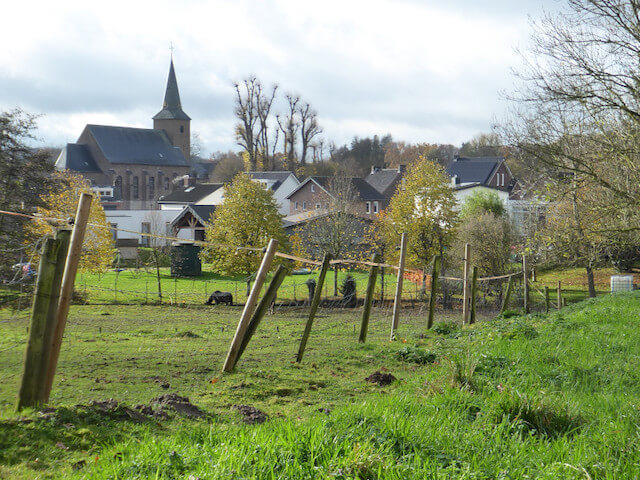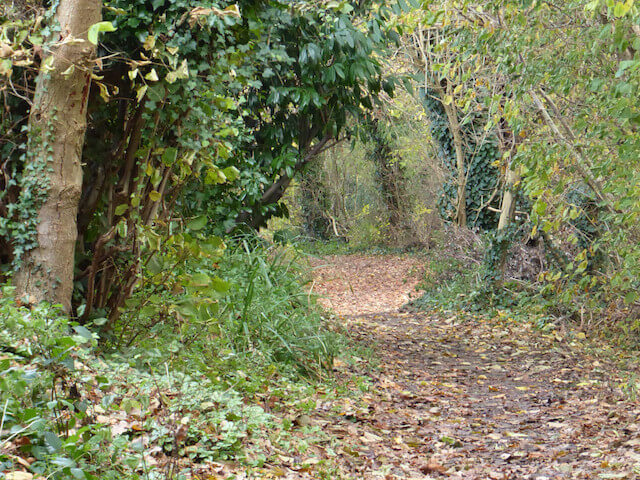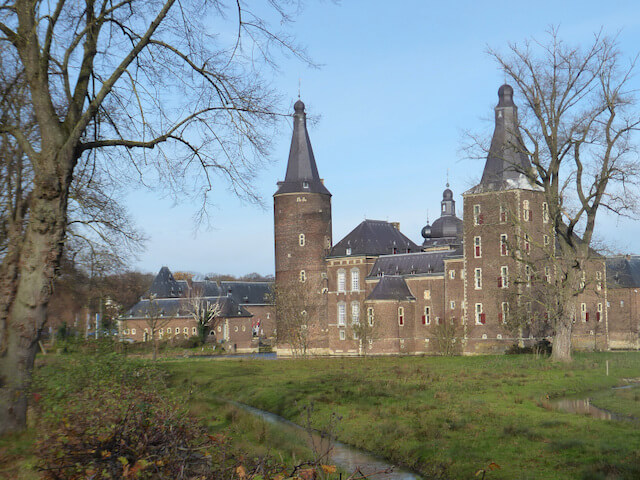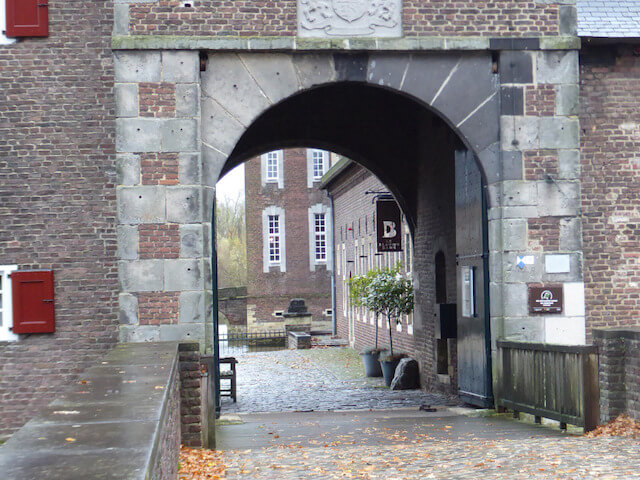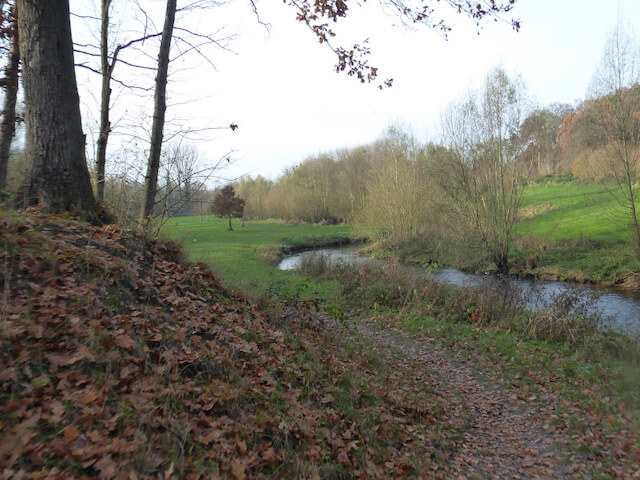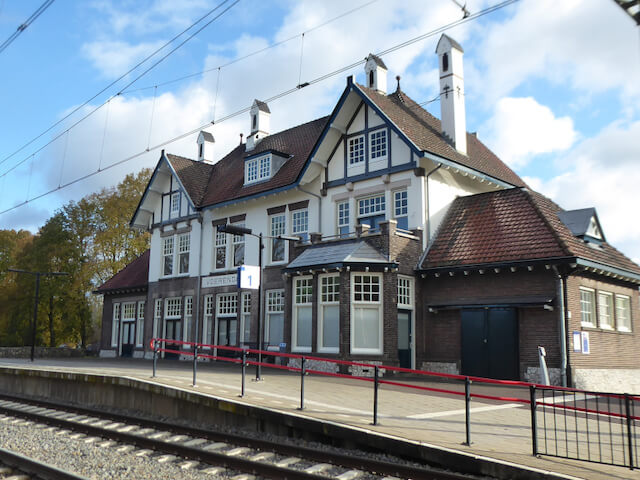
Point to point hike from Voerendaal to Nuth for lovers of views and castles. The walking tour goes past five castles, along the Huisbergerbeek and the Geleenbeek. The castles that are visited are: Cortenbach Castle, Puth Castle, Rivieren Castle, Wijnandsrade Castle and Hoensbroek Castle.
Distance: 18 km.
Time: 3h30.
Grade: Moderate.
Type: Point to point.
Gps Track: Yes.
Route description: Yes.
Wheelchair: Not suitable.
Dog: Allowed.
Height gain: No info.
Trail: 44% unpaved.
Marking: See PDF route description.
Hiking shoes recommended.
Advertisement.
CASTLES AND VIEWS.
The first four castles have no or very limited access. Hoensbroek Castle, the most impressive castle of the five, is accessible. The first castle to be visited is Cortenbach Castle. The castle is originally a medieval fortress and the associated castle farm both date from the 14th century. The current castle was built from the remains of the castle. After leaving the place, the walking tour goes past Puth Castle. The current castle dates partly from the 16th, partly from the 17th and 18th centuries. Some cellars may be older. The castle is already mentioned in documents from the 14th century. The title "lord (or lady) of Put" was attached to the estate. Rivieren Castle or Ter Vieren Castle was first mentioned in 1364, when it was probably founded by Catharina van Rivieren, prioress of the Sint-Gerlach monastery in Houthem. The original function of the building was a monastery. Wijnandsrade Castle is a partially moated building consisting of three wings surrounding a courtyard. The oldest part is the west wing, an original defensible house built in the years 1554 to 1563. The last castle, one of the largest castles in the Netherlands that can be visited, is Kasteel Hoensbroek or Gebrookhoes (The Limburg name Gebrook means nothing other than 'the swamp'). The oldest part of the castle, especially the high round tower, dates from around 1360. In 1225 there was already a predecessor in this swamp (or brook), a so-called motte castle. In 1250, a fortified house was built on the site of the current castle. Due to its very strategic location for Limburg on the important trade routes to Maastricht, Aachen and Cologne, the castle was expanded in successive phases into the largest fortress between the Maas and the Rhine. It contains 67 halls, rooms and spaces.
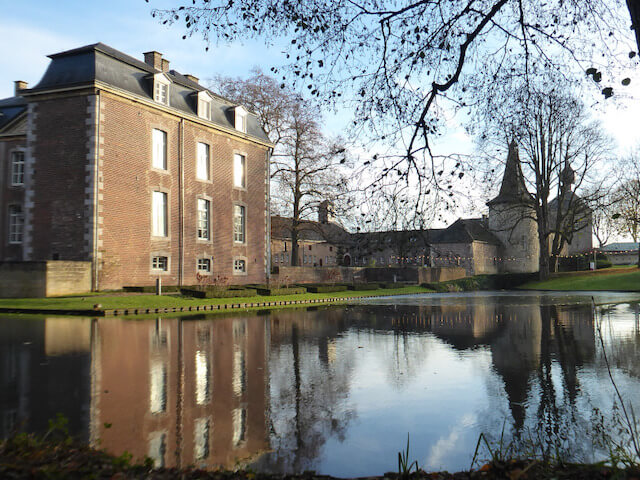
Download PDF for route description.



